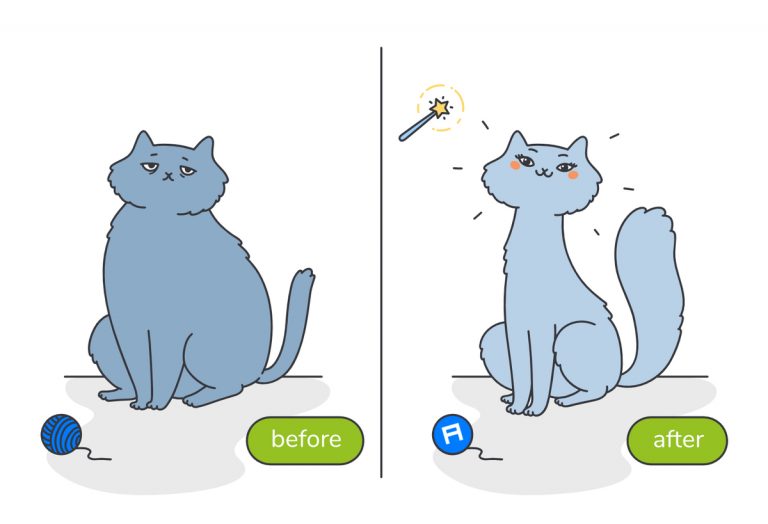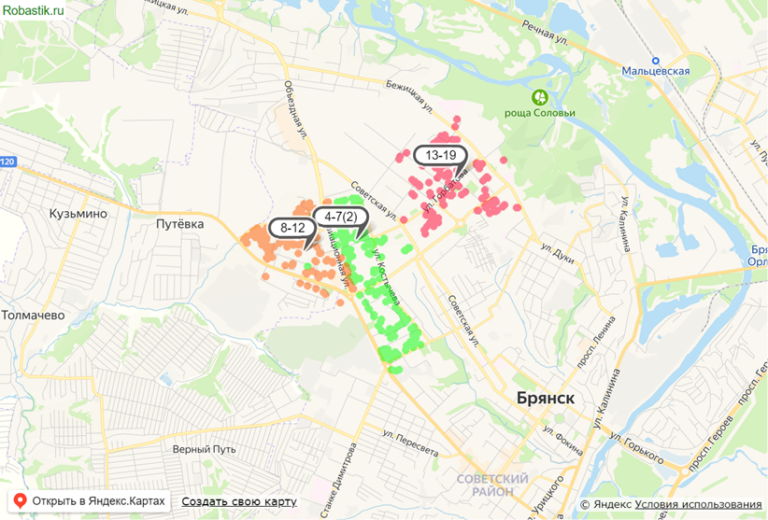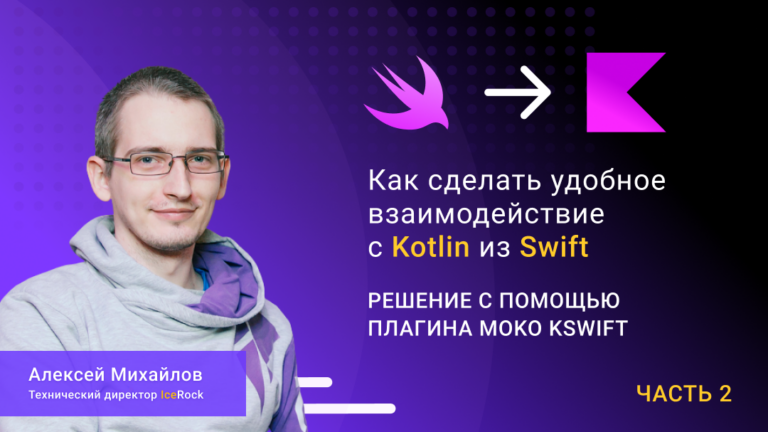Ideas and tips for producing employee merch

For almost a year we created a concept, looked for production, tested things and figured out how to solve problems with printing, deliveries, typos in the finished batch, etc. We collected tips, contacts and important points for those who are planning to launch merch in their company. Even if it’s just corporate T-shirts.
Why do you need merch at all
In the literal sense, the project does not earn money, but it performs other important tasks. In our case:
- motivates employees to be active and achieve in a game format: wrote a useful article → saved up for a cool thing,
- works for an hr-brand: I want merch → I want to be a “robot”,
- forms a sense of belonging to a common cause,
- allows the team to express themselves in an internal project – to do everything for themselves and for themselves.
Raincoat
Summer 2019 was distinguished by rainfall, so we were the first to make raincoats, deciding that this is a practical thing for our climate. It turned out that this is not such an easy task. We did not like the material for the products: in general, they offered either a thin film or a very hard fabric that forms creases.
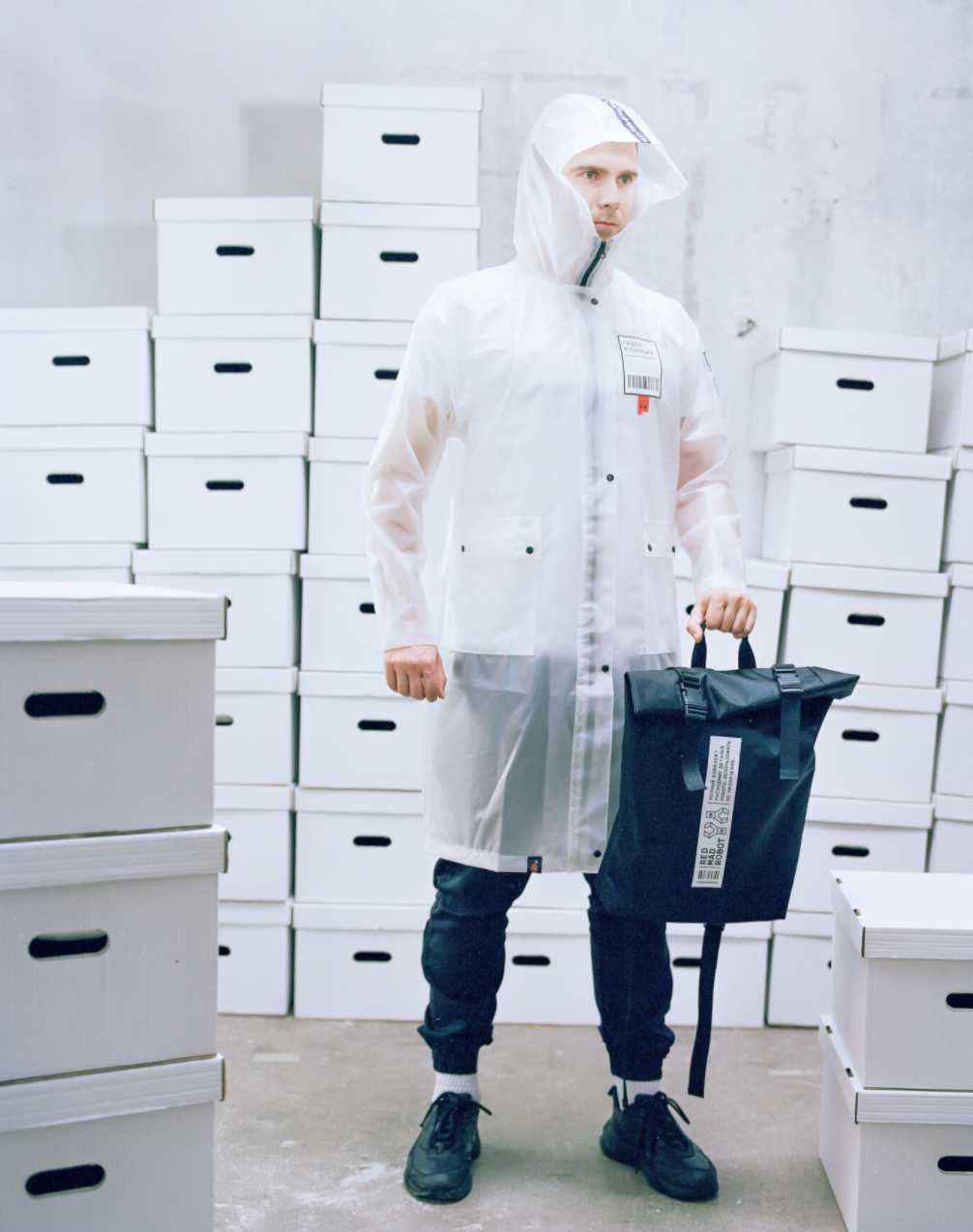 |
 |
For several weeks we went to shopping malls and looked for samples that the whole team would like. As a result, they bought a raincoat in the mass market, which they arranged according to the style and material, and ordered a suitable fabric in Korea.
With it we came to production, where they made patterns for us for the found raincoat, sewed a couple of samples that we customized for ourselves: for example, we added pockets for convenience, and production changed the patterns and prepared samples for us again.
What to look for if you decide to make branded outerwear:
- How resistant the fabric is to moisture
- How durable the fabric is. It is advisable to arrange a crash test: crumple, pull, water and try on employees,
- How prints look on fabrics and how they behave after washing.
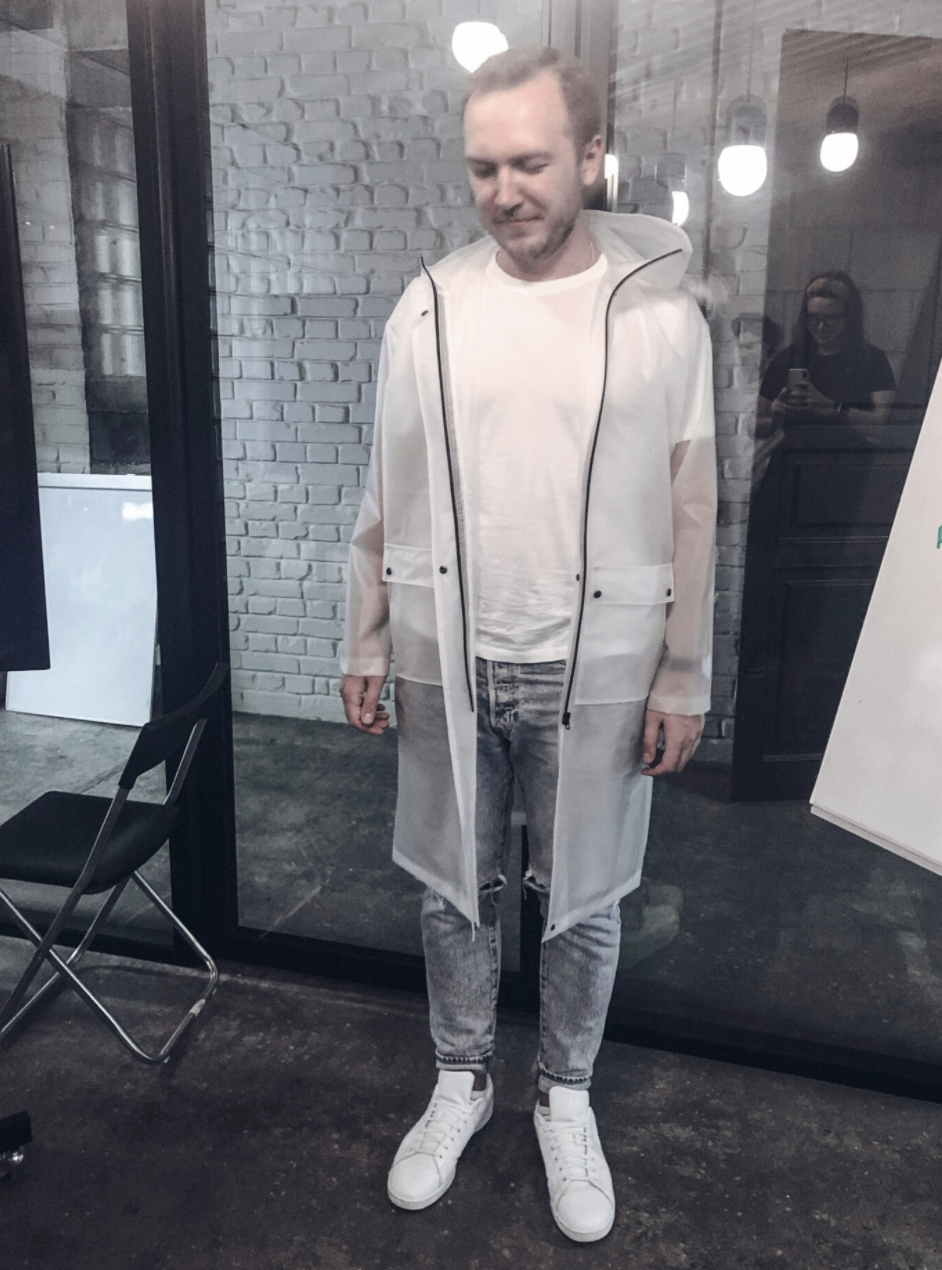 |
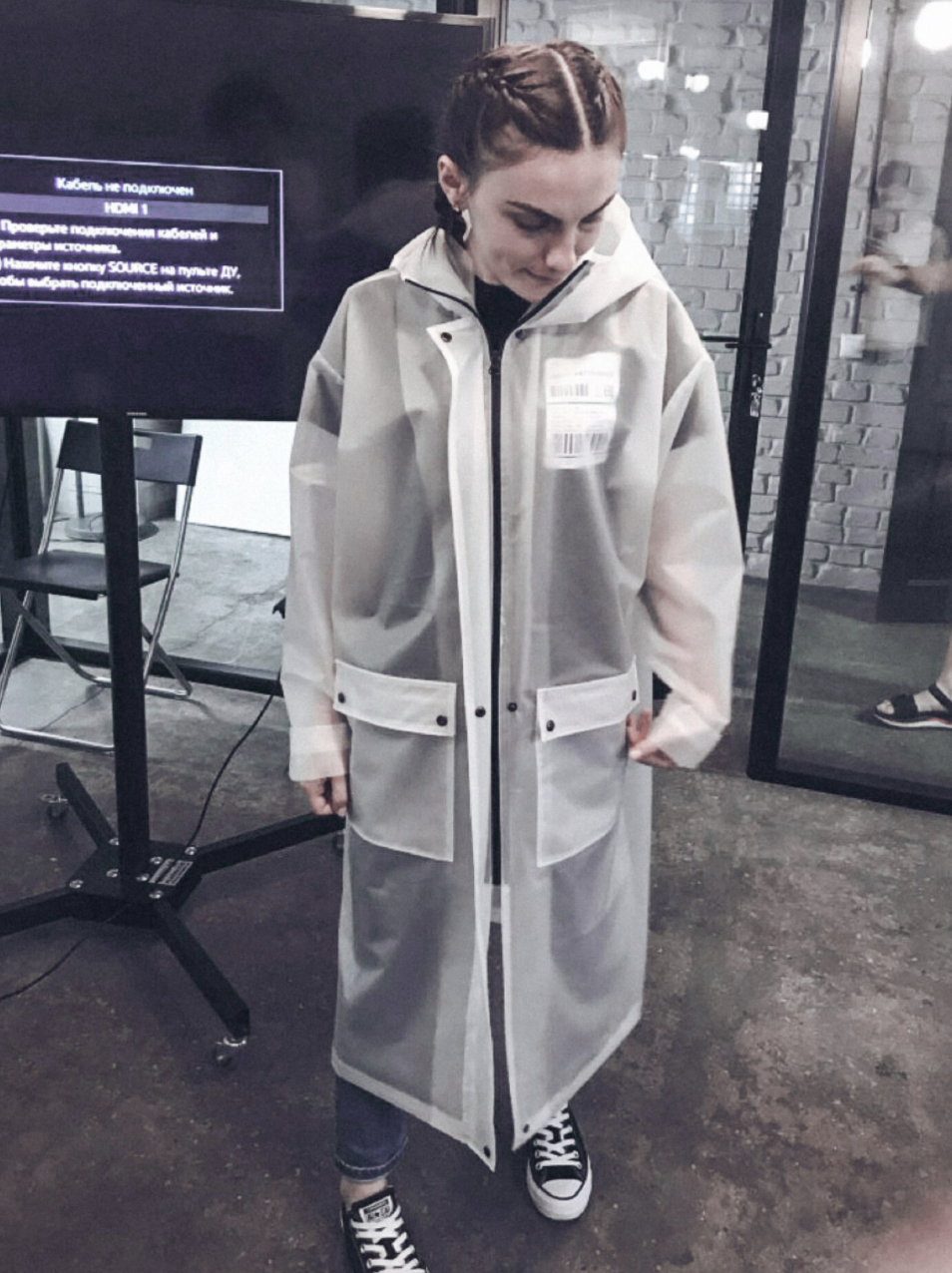 |
To test the sizes of the merch, we selected two typical figures among employees. So the patterns got the names “Zhenya” and “Polina”. And Christina was an extreme user testing the fit for miniature figures.
For a thing “from scratch” stock up for about two months:
- 5-7 days make a pattern and a sample,
- 3-4 days delivery and testing of the sample,
- 30 days launch into production,
- 14 days – sewing the product.
Socks
The socks were made in collaboration with backend developers. The Redmadrobot X Back-end collection includes weekend and holiday items plus entry socks for workdays. It seemed that socks were a fairly popular product, so there shouldn’t be any problems with them.
 |
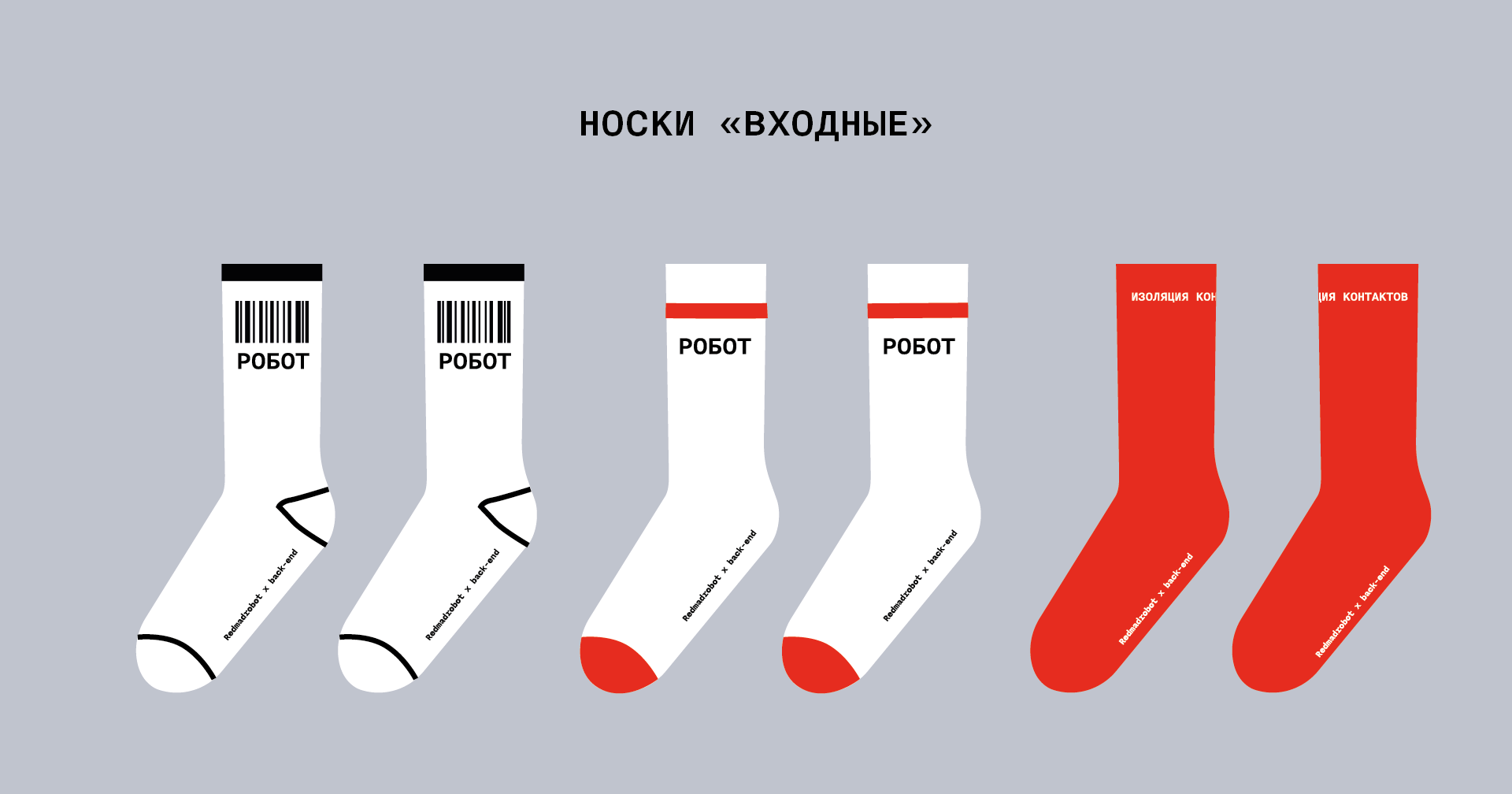 |
But we went through Moscow, Moscow region, St. Petersburg, Nizhny Novgorod, made several test samples (the cost of one – from 1,500 to 2,500 rubles), and everywhere the quality was not up to par. Saved Novosibirsk and production Stereo Socks…
What to look for when producing knitwear:
- Material quality: the fabric should be pleasant to the body,
- The quality of the elastic, especially for sports models (so as not to sting),
- How the embroidery and logo look when stretched: so that there is no unnecessary distortion of the image,
- How neatly the inner seam is made
- Acceptable font sizes for drawing: we had to shorten the text to make it readable.
 |
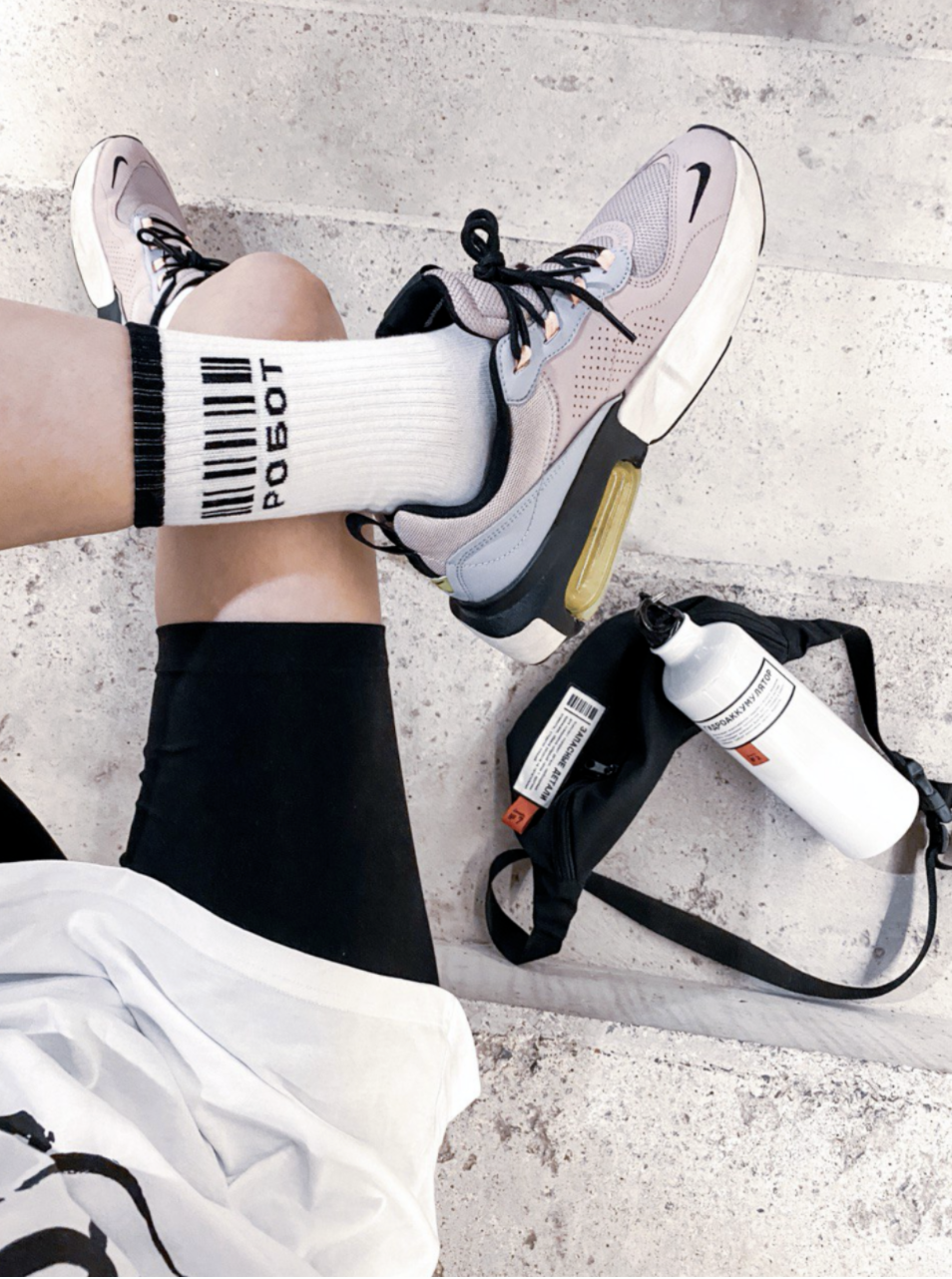 |
Scotch
Scotch tape is a quick way to brand any item. In addition, the production time and the price are pleasing – it can be done in one or two weeks. We got the cost price in a batch of 216 rubles wide and 360 rubles narrow. The whole lot was 27,159 rubles.
What else is interesting
Not all things came to us through adventures such as duct tape and raincoats. For example, badges are easy enough to make; they are simply cast in a fixed shape. Good metal badges were made in St. Petersburg Pinhead…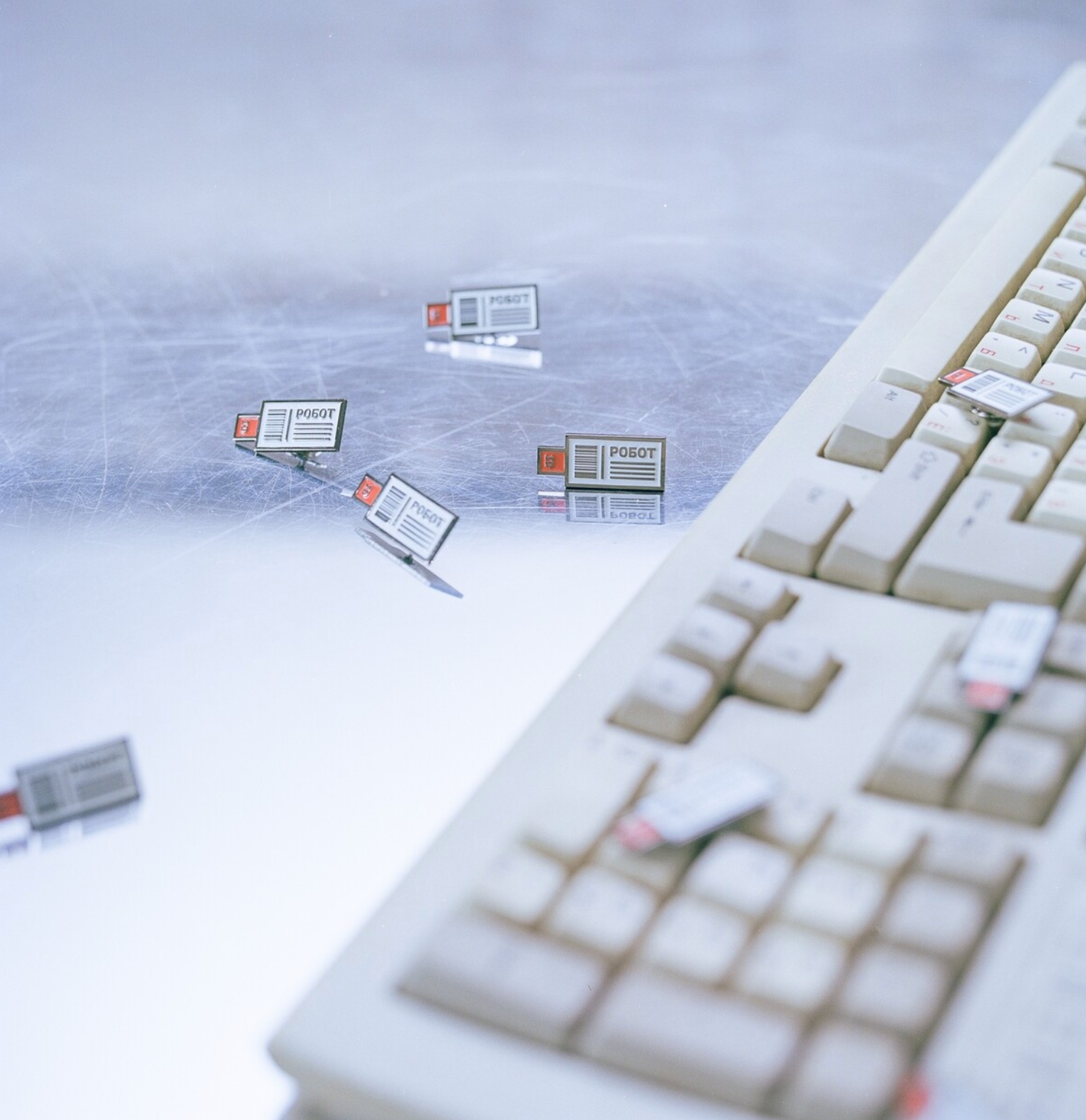
Or the most popular item in the store is charging. The basis is the finished model. We chose Xiaomi – high quality powerbanks that can be applied on (this is not possible on all models), and they fit most phones. Fitting the layout, not the final application:
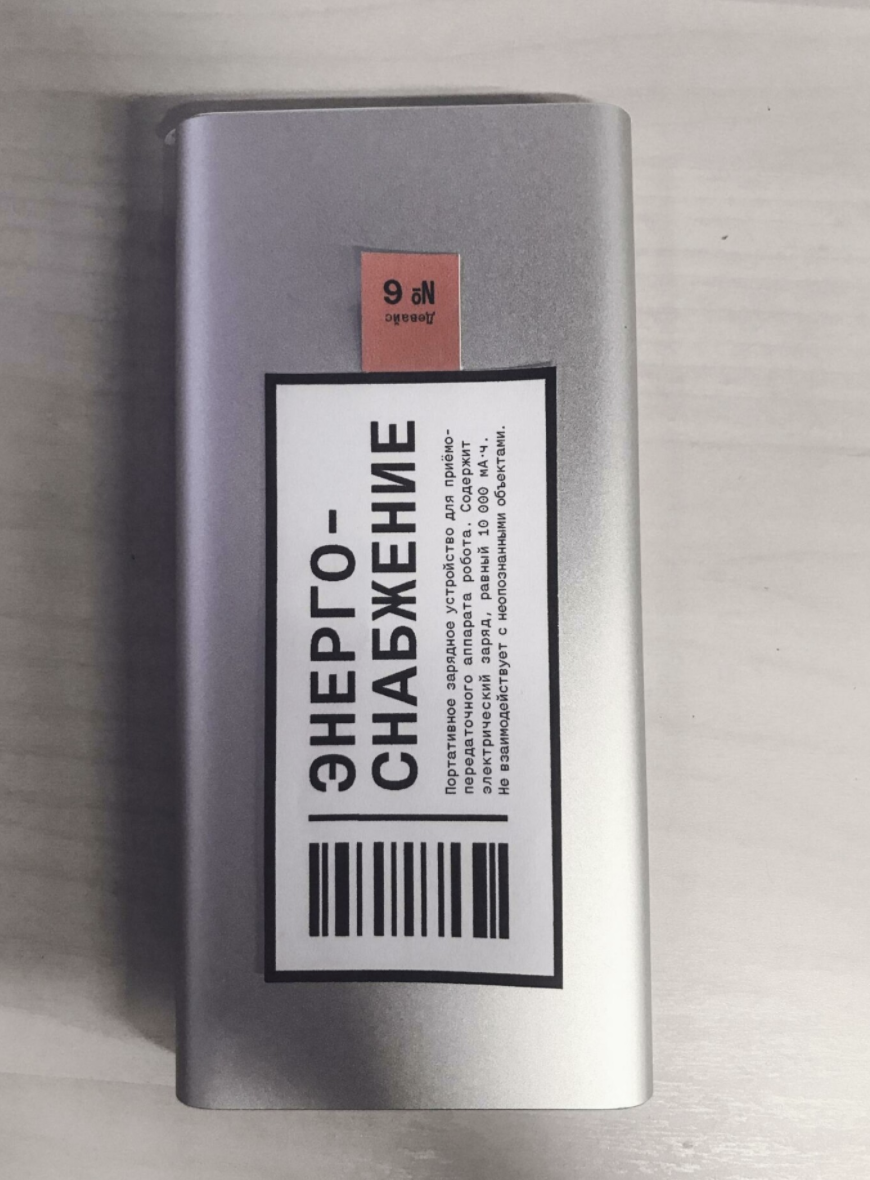 |
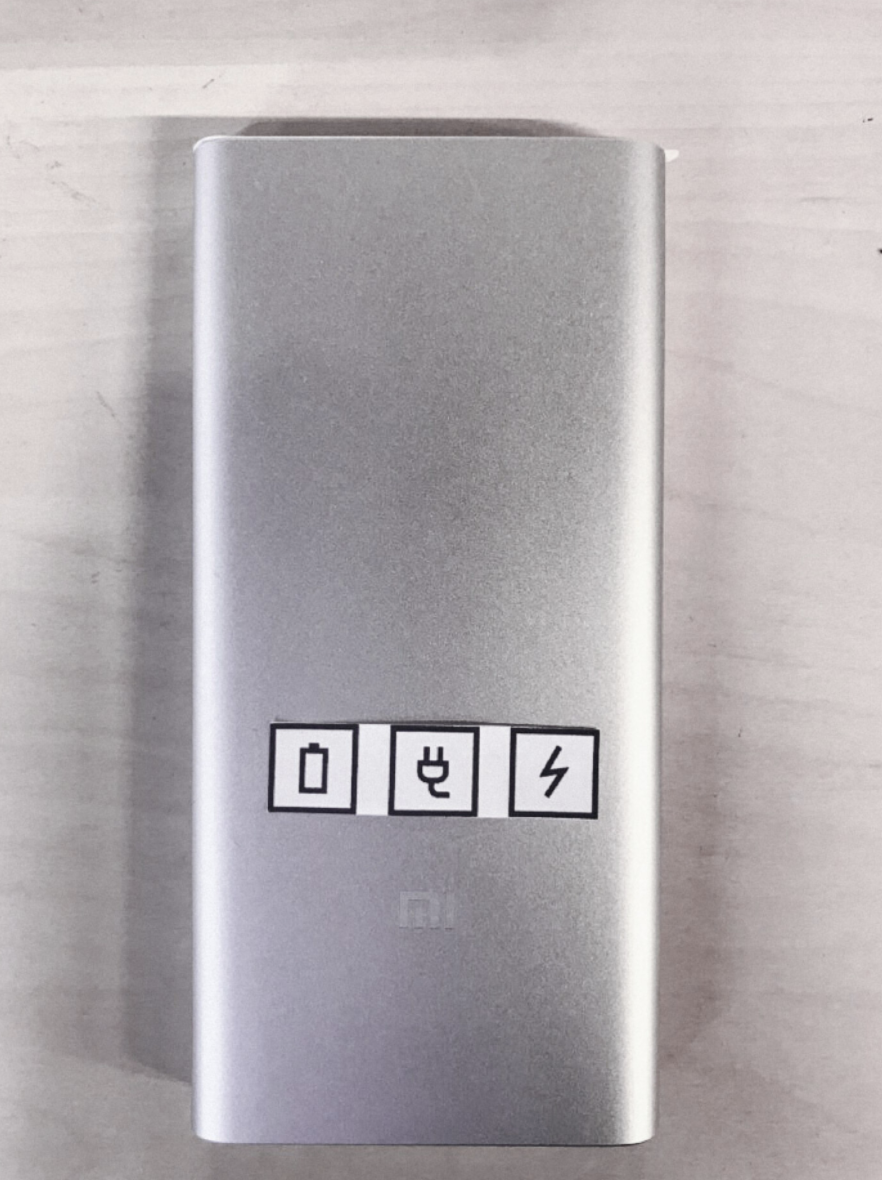 |
But the backpacks were conceived as a New Year’s gift. We saw a cool model in production and asked to modify it according to our wishes. But despite the fact that the backpack was critically tested, we will make changes to the next batch: we will replace the accessories with more durable ones.

All layouts were necessarily printed and tried on. If the sizes of the merchandise varied (as, for example, for sweatshirts), then the designer chose the size of the labels that would look equally good on both small and large sweatshirts. This is because it would cost extra money to produce labels of different sizes.
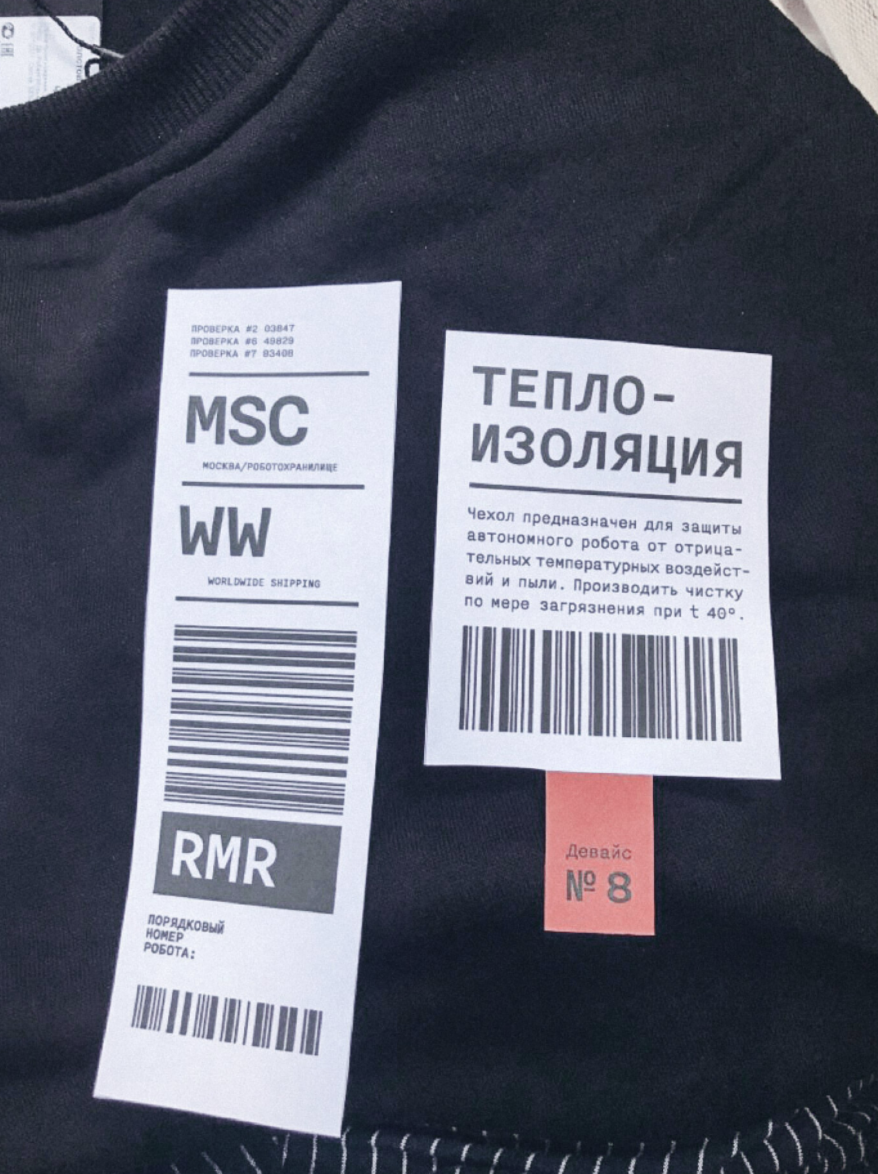 |
 |
To make the sweatshirts, I had to change the font design. Small text was constantly asked to enlarge, because it was problematic to embroider it.
The jacquard embroidery technique that we originally planned required to increase the text up to 2 mm. It seems that this is a little, but increasing the entire layout proportionally, it turned out that the patch becomes gigantic and unlike a label. In addition, the rest of the items were already produced in the correct size, the concept could not be changed. We found a contractor who already had experience with quality printing of small technical texts. The next step was to choose a suitable fabric.

The material for the stripes is important as the print quality depends on it. Ordered in “GalaPolygraph”
When we saw the palettes with samples, it turned out that we have much less options than we thought. The fabric had to meet both design and technical requirements. Among the design wishes were: the desired shade of white, type of weaving, material, density.
Technical – width restrictions. The fabric was not cut to our size, but was already in rolls of the width of certain formats, and in most cases, too narrow for our layouts.
Finally, we found a single ribbon sample that was close to our layouts and met all design requirements. So we had to once again (about the 10th in a row), but already the last, to adjust the layouts to the desired size.
Fakap with a water bottle and what we haven’t done yet
There are many ideas in stock that I would like to implement, but so far we cannot find samples that we absolutely would like. For example, we do not lose hope of making sleep masks and white passport covers.
The sleep masks that we came up with are atypical, and no one launches new patterns into production in small quantities (from 30 to 100 pieces). Surprisingly, we also didn’t find a white passport cover that was of good quality – nice to the touch and not stiff.
Almost perfect covers were bought in “Republic”, we contacted the manufacturer, but we could not agree with them: as with masks, they are not interested in small editions. But we are looking further. If you have logins and passwords, please write to us.
Typo sent to production
When we ordered a bottle for water, we made a mistake in the word “Hydraulic”. They wanted to give the bottles at a summer corporate party, so there was no time to redo. And we didn’t notice the typo right away. In the next game we will correct it.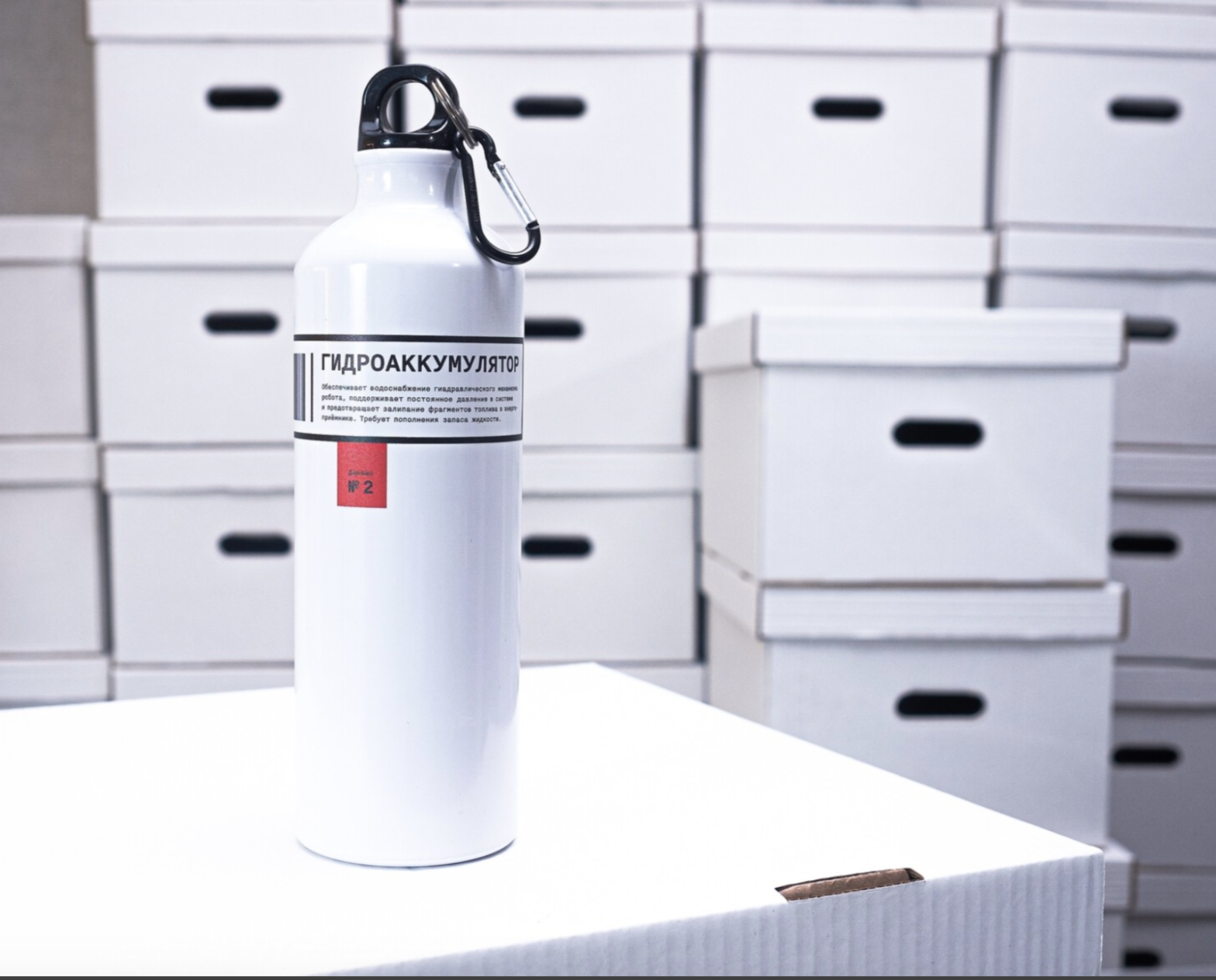
If you look closely, you will notice
Conclusion: before you send a thing for printing, double-check every small letter and symbol. Desirable ten times and with different people.
Eight Tips on How to Release Good Merch
Merch and merch store is a complete project with a team, management, budget, KPI and goal.
- The idea is at the heart of everything. Come up with a solid communication idea that can scale to fit different products so that you have not just branded items, but a whole story. Think about how the merchandise works with the company’s cultural code and what values it carries.
- Merch for employees. Involve colleagues from different departments to work on the project. For example, the guys from the development came up with socks with us. And we invited our employees to shoot, because they are the carriers of the products.
- The 80/20 principle. The main job is preparation. Sit down, imagine your goal, write a plan, then do it. Do not be afraid to try on printed patterns ten times before sewing to make sure everything is in its place.
- Distribute precisely the roles of who does what. Working on a store is a project and clear management is important. The group isn’t just going to have fun: it has deadlines and tasks.
- A good supplier is half the battle. If you have not found a supplier in your city, see other regions. In most cases, regional production costs are lower and shipping pays for itself.
- Rule “measure seven times, cut once” applies not only to tailoring, but also to the wording of the TK. Production patterns are quite expensive, for example, a raincoat pattern cost seven thousand, so you need to give detailed comments to the samples, and when the whole team has discussed them and are confident in their wishes. Write a technical assignment for production (down to the smallest detail), but be prepared for a dialogue with the performers: sometimes they know better than you how to do it right.
- Make test samples. We did things three or four times and that’s okay. Test fabric and application. Do not hesitate to arrange crash tests on samples: wash, iron, tear, etc. If you don’t like samples, look for quality items on sale and then show them as a sample for production. And also be sure to try on merch on people with different heights, different types of figures, and even with different habits (for example, someone wears a bag over their shoulder, and someone on a belt).

One final tip – stock up on storage space
Production contacts
- Raincoats were made in Futtur gifts
- Patches-labels in “GalaPolygraph”
- Socks in Stereo Socks
- Shopper in “Jamaica”
- Icons in Pinhead
- Good mug application that can withstand everyday cleaning in the dishwasher, made in Admos gifts…
Do you have any merch? What does he look like? If not, what are you planning?
